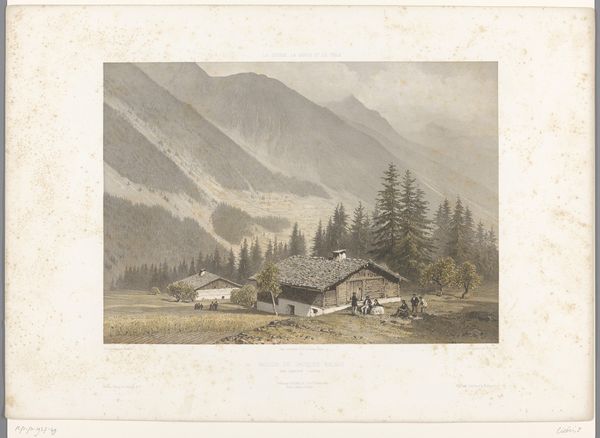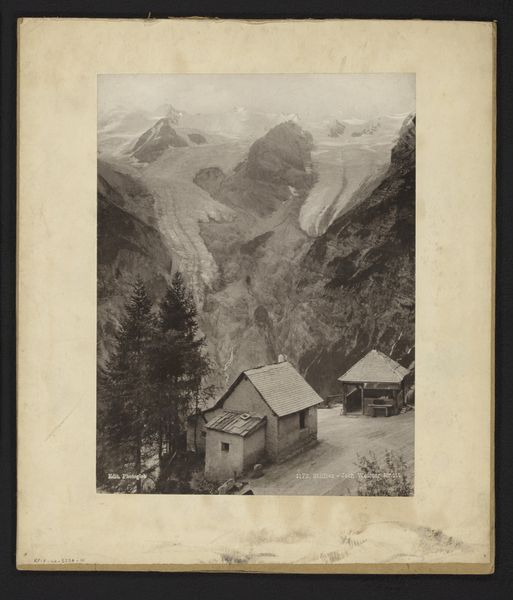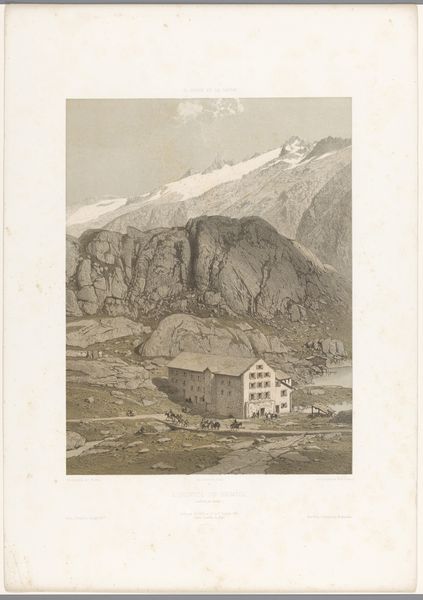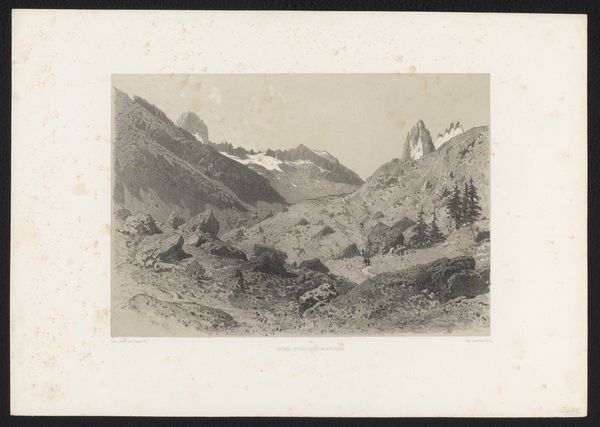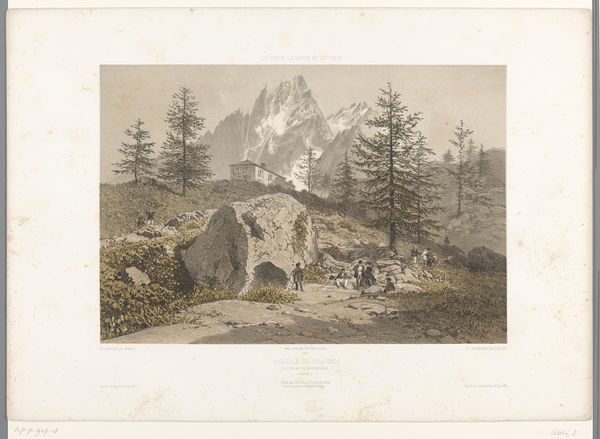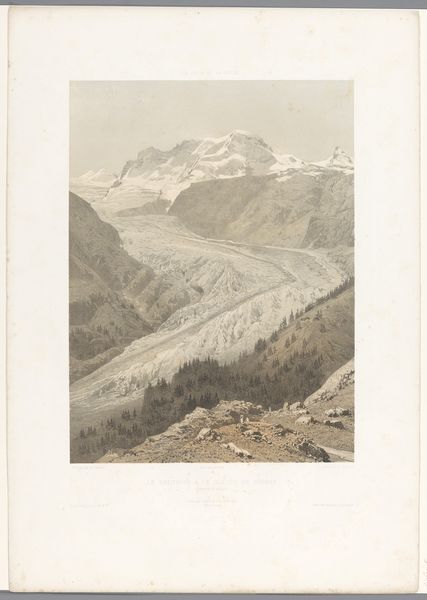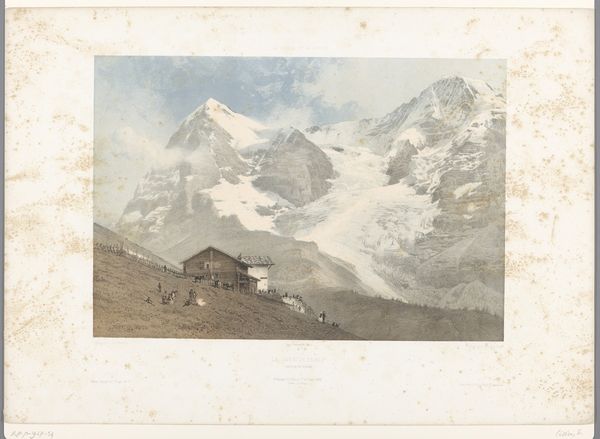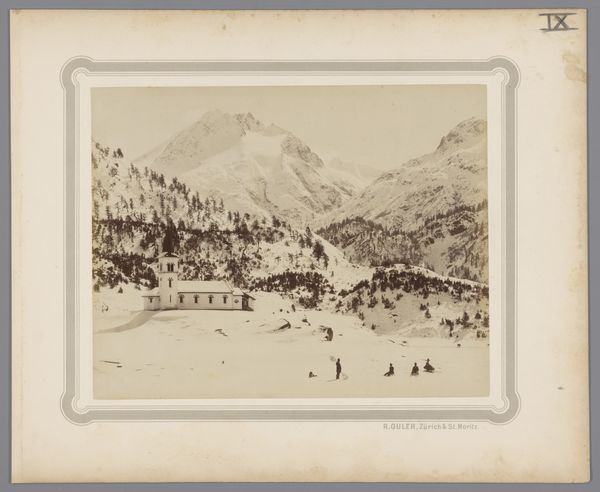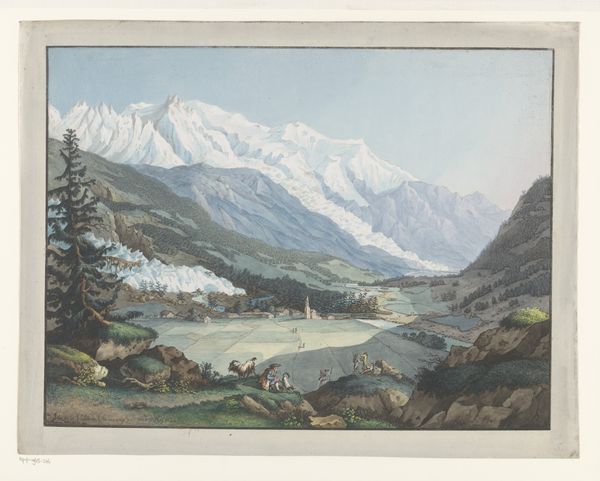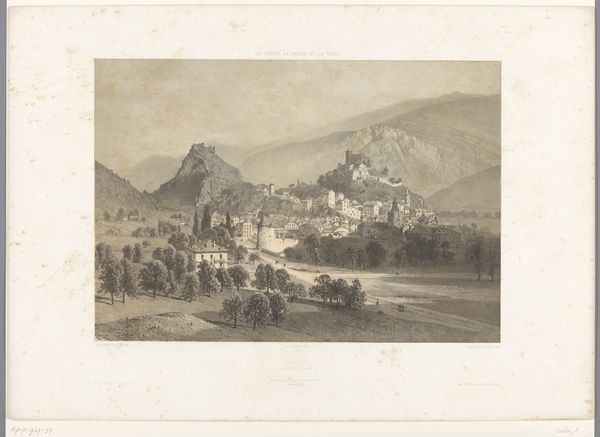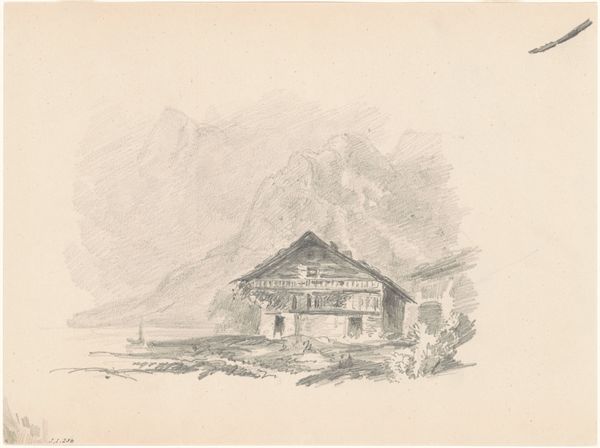
Zicht op de bergtoppen Aiguille Verte en Dru en de gletsjer Mer-de-Glace 1859
0:00
0:00
Dimensions: height 565 mm, width 400 mm
Copyright: Rijks Museum: Open Domain
Editor: Here we have Eugène Cicéri's "View of the Aiguille Verte and Dru Peaks and the Mer de Glace Glacier," made in 1859. It's a print, and what strikes me is how it juxtaposes the imposing scale of nature with this small, almost idyllic village scene. What catches your eye? Curator: I'm drawn to the physical process of creating this print. Think about the labour involved: from sketching the initial scene, perhaps plein air, to transferring that to a printing plate, etching, inking, and finally, the repetitive act of producing multiple copies. Each print becomes a commodity, circulating images of nature, transforming it into something digestible, and reinforcing a particular view for consumption. Editor: That's interesting, I hadn't considered the implications of it being a print in that way. How does that mass production affect our understanding of the "romantic" landscape? Curator: Exactly. It challenges the romantic idea of the sublime. Here, nature, specifically a mountain range, isn't some terrifying, inaccessible force, but rather something that can be reproduced, distributed, and owned by many, impacting on a sense of cultural commodification.. Even the figures in the foreground seem posed, almost as props for the consuming gaze. The presence of the carefully stacked wood against the building is revealing too – highlighting resource and labour as part of the lived reality of this environment. Editor: So it's not just a landscape; it’s about how that landscape is made accessible and, in a way, consumed through this specific medium? Curator: Precisely! Consider how the print flattens and packages a whole world. What's depicted here – the mountain, glacier, and the workers pictured - it is all processed into ink on paper. Editor: I see your point; focusing on the means of production really changes how you read the image. Thanks, this was a very helpful lens through which to interpret this landscape print. Curator: Indeed! Considering the print as both image and object creates a much richer understanding.
Comments
No comments
Be the first to comment and join the conversation on the ultimate creative platform.
